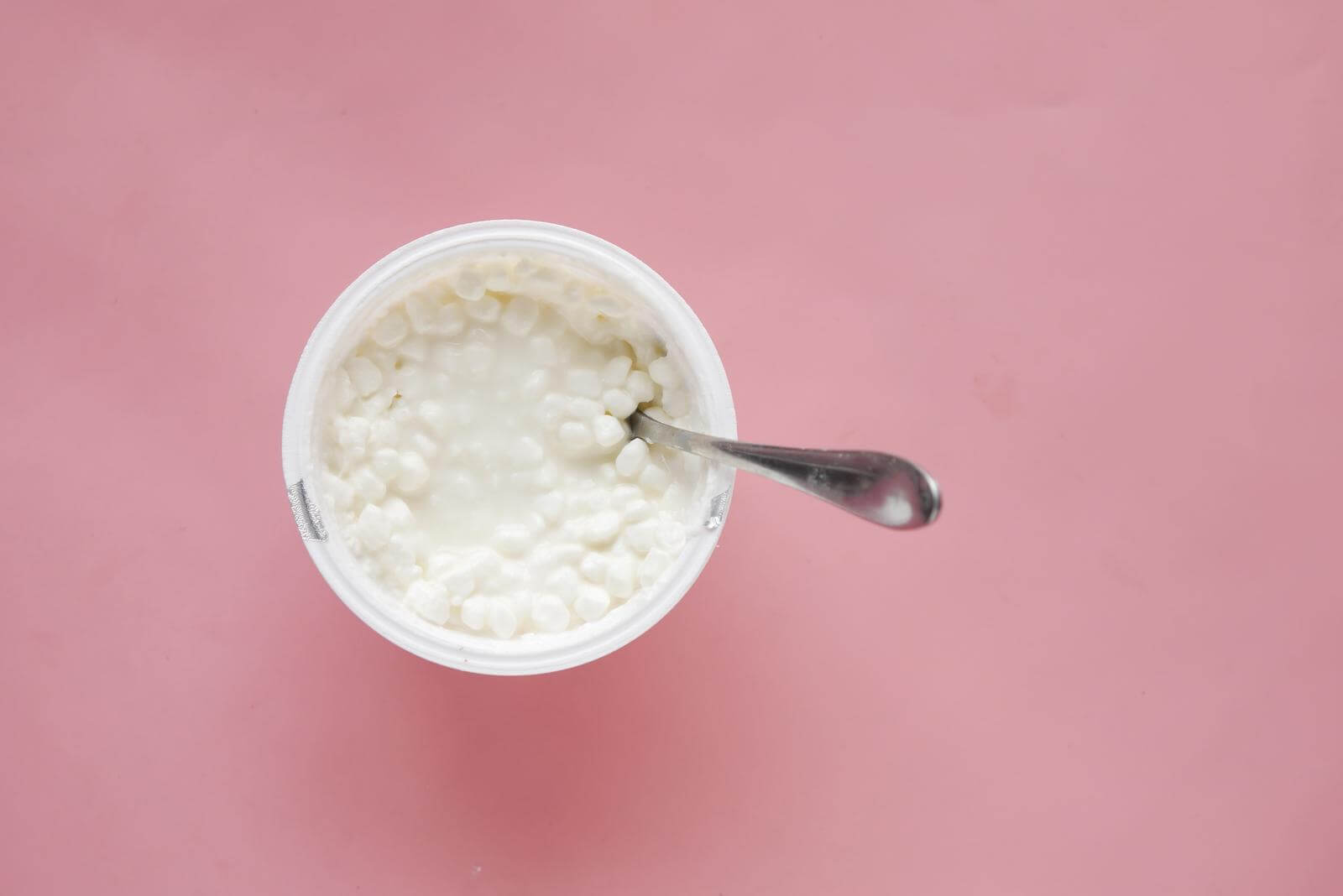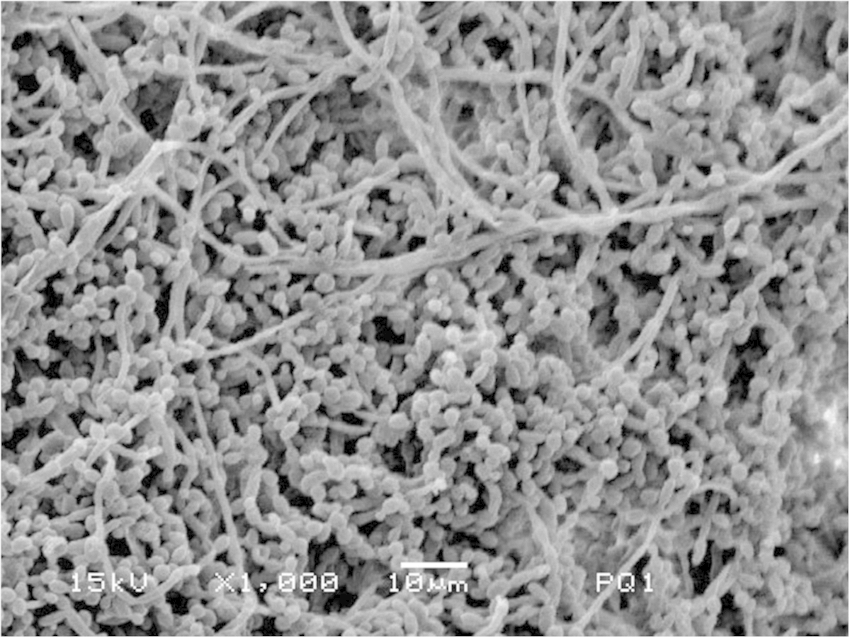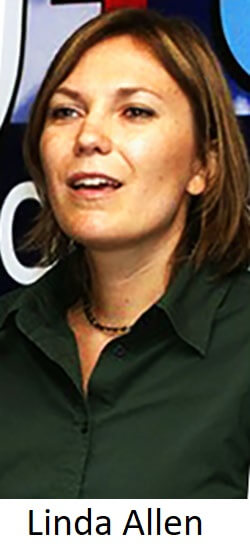See all "Discharge" Section Topics

Research has proven, a white cottage cheese discharge from the vagina, is a strong indicator of a yeast infection in that area. The studies we will look at, later in this article, will demonstrate this statement.
There are, perhaps, no other etiological (causal) microorganisms that can produce a thick, white, curdy discharge that really looks a lot like cottage cheese; other than Candida. So, although it's horrible to have a yeast infection, the presence of this symptom is a great indicator your vaginitis is due to Candida.
Many women with vaginitis find that they are unable to determine the cause; even medical professionals can sometimes have a very hard time pinning down the cause of vaginal problems. Thus, you can be pretty certain your problem is a yeast infection; and not something like an sexually transmitted disease (STD) or bacterial vaginosis.
Another key way, to help increase the accuracy of your diagnosis, is to see what other symptoms of a yeast infection you have. The more of the symptoms you can identify, that correspond to a Candida infection, the more chance you have of making a correct diagnosis.
The various studies, that we discuss, also state other common symptoms that result due to yeast overgrowth. This may not be as good as a microbiological identification; but, it can be a strong step in the right direction!
And, if you’ve suffered from a yeast infection in the past, you likely have a very good idea of what is happening down there. Many women have adequate knowledge of what this nasty yeast can do to them.
Feel free to check out the sources, listed in this article, for a more detailed understanding of yeast infections. Your local university or library may be able to provide you with access to restricted content; saving you the money you’d need to actually buy them!
A 1/2 Day & Yeast is Gone!
Linda Allen suffered from yeast infections for years. Through researching natural medicine & Candida, she found an efficacious solution!
Linda is one expert you want on your side! Let her show you how to get rid of a superficial yeast infection in just 12 hours; AND, keep it gone!
A 60-day, 100% money back guarantee is provided.
Visit Official Site!Candida Discharge Research

The Journal of Community Nursing [22.1 (2008): 20], stated that cottage cheese like vaginal discharge, was a key symptom of vaginal Candidiasis. The study stated that the vaginal discharge would not have an offensive odor. If you do have a strong “fishy” smell from the vagina, you likely have bacterial vaginosis.
Other symptoms of a vaginal yeast infection included: an itchy or sore vagina, fissures of the skin (small cuts in the skin), vulvar swelling, and painful sexual intercourse. The study also related, that approximately 10 to 20% of women with Candidiasis of the vagina, would be asymptomatic. The researchers also stated, that symptoms of this health issue, can be precipitated by antibiotic drug use, wearing tight clothing that traps moisture, using vaginal douche products, and even the use of heavily perfumed soaps and bubble baths.
The British Journal of Nursing [19.16 (2010)], also discusses vaginal discharge associated with a yeast infection. According to the author, a curdy, cottage cheese like discharge can occur when the vagina has Candida overgrowth. Other symptoms of vaginal Candidiasis, include a itchiness in the vagina and an itchy vulva.
The study also states, there can sometimes be soreness and burning in the vagina, that can migrate to the vulva; the result can be painful sexual intercourse. Increased redness of the vagina, vulva, and occasionally the cervix can occur; making these areas excessively red.
The study also relates the well known statistic that up to about 75% of all women will get one yeast infection during the course of their lives.
The Journal of Obstetric, Gynecologic, & Neonatal Nursing [30.3 (2001): 306-315] also deliniates some of the common symptoms of vaginal yeast infections. One of the primary symptoms, is the appearance of white, clumpy, cottage cheese like vaginal discharge.
This discharge is somewhat sticky; and, will stick to the mucous membranes. Thus, the discharge may not evacuate the vagina very readily. Other symptoms of vaginal Candidiasis, included in the report, were: an inflamed, reddened, possibly swollen vagina or vulva; vaginal itching or burning; painful urination; and excoriations (which are sores; for more information, check out this article: yeast infection sores).
Another journal paper, published in The Journal of the American Medical Association [291.11 (2004): 1368-1379], also discussed the correlation of vaginal discharge with Candidiasis of that area. According to the study, a thick, curdy, white discharge is very strongly predictive of a vaginal yeast infection. And, this description is exactly comparable to that of a white “cottage cheese” like discharge.
The study also stated, an absence of an odor from this discharge, was indicative of Candida; whereas the presence of an odor was a strong indicator of bacterial vaginosis (for more information check out: yeast infection smell).
The study also related, the presence of vaginal itching, also increases the chance vaginitis is due to Candida. And, redness of the vagina, also slightly indicates Candida is the culprit of the infection.
A journal publication, entitled Evaluating Vaginal Complaints, was published in Emergency Medicine News [30.1 (2008): 22-23]. The text states, that a sign of vaginal yeast infection, is a thick, curdy, white vaginal discharge that resembles cottage cheese.
Other frequent symptoms of a vaginal yeast problem include: vulvar inflammation, vulvar or vaginal swelling, very red areas of skin, fissures (small tears in the skin), excoriations (sores; places where the skin has been eroded away), and an absence of foul vaginal odor.
But, you should keep in mind, you can have a yeast infection and bacterial vaginosis at the same time; so, if there is an odor with cottage cheese discharge, it’s likely you have both maladies.
There are more journals that contain accounts of what types of vaginal discharge diseases can create. But, as demonstrated by the above research, there is a clear consensus that Candida can create a discharge like cottage cheese.
If you’ve had a yeast infection in the past, you are probably more able to recognize the symptoms of such an infection. The presence of so much material, that it oozes out of the vagina like cottage cheese, suggests you have a lot of Candida in the vagina.
You may wish to clear it out via douching with diluted apple cider vinegar. Make sure not to use more than very diluted concentration of vinegar; as it won’t take much vinegar to kill Candida.
Using a strong concentration of apple cider vinegar can cause irritation or chemical burns to occur—make sure you use this remedy safely!
You can then apply some natural treatments to clear up your problem. There are a lot of remedies using essential oils, herbs, and other items on Candida Hub. If you have some time, you may want to check them out!
A study, also confirming vaginal Candidiasis can bring about a cottage cheese discharge, was published in Archives of Gynecology and Obstetrics [Volume 287 (2) - Sep 27, 2012]. The study is very informative regarding discharge; and, included a large population of participants.
The study not only dealt with vaginal Candidiasis, but also looked at two other common vaginal problems: bacterial vaginosis (BV) and Trichomoniasis. This research utilized 657 consecutive outpatients with vaginal symptoms. The women were all of reproductive age, and were not pregnant or lactating.
Samples of the vaginal discharge were analyzed from the women participating in the study. The women who underwent examination, were asked about their vaginal discharge. An increase in vaginal discharge, and the characteristics of this discharge (consistency and color), were inquired about.
The women were also asked if they had foul vaginal odor, itching of the genitals, or had pain during sexual intercourse.
The results of the study showed that, of the 657 women, 246 (37%) had a vaginal yeast infection. Concerning other infections, 350 (53%) women had BV; and, 53 (8%) women had trichomoniasis. These statistics are also valuable for self diagnosis; as you can see the likelihood of having each infection.
And, if you have not had any questionable sexual partners, you can probably rule out the STD trichomoniasis as the cause of unusual discharge.
Concerning the types of discharge these women had, a typical cottage cheese like discharge was seen in women who had only a vaginal yeast infection. Those women with only BV, had a homogeneous grey vaginal discharge.
Women who had only trichomoniasis, usually these women had a green-yellow or yellow, foam-like, thin, purulent (consisting of pus or having pus) discharge. For women who had a yeast infection and another type of vaginal infection, their discharge varied in color; but, was still cottage cheese like in consistency.
The discharge was noted by the study as a cottage cheese like, yellow or green-yellow; and, there were 10 women who had a yeast infection and another infection simultaneously.
The study also stated that most women with vaginal symptoms have an increased amount of vaginal discharge. Fortunately, for the purpose of accurate self diagnosis, a cottage cheese like discharge is strongly predictive of a vaginal yeast infection.
Differential Diagnosis
As iterated, a caseous (cheesy) discharge indicates vaginal Candidiasis; however, what if you have other symptoms like a foul vaginal odor? Again, this can mean you have BV as well. BV is caused by dysbiosis (an imbalance of bacterial life; i.e., too many pathogenic bacteria and not enough good bacteria) in the vagina.
BV is the most common of all vaginal infections; so, don’t feel you are unique; more women develop BV than any other vaginal problem. BV can even cause the vagina to smell like cheese; although, typically BV causes a fishy smelling odor. In tandem with a caseous discharge, a concomitant problem, such as this, can be very upsetting.
The good news is, BV is easy to cure with natural medicine; and, you can keep it away without it recurring, via natural medicine. And, of course, yeast infections are also ameliorated, via natural medicine, as BV infections are.
Some additional help, to acquire for self diagnosing, was given by a study published in the American Family Physician [83.7 (2011): 807-815] journal. A quote is presented from the researchers, that describes BV; and, this infection’s prevalence.
Bacterial vaginosis is the most prevalent cause of vaginal discharge or malodor, occurring in up to 30 percent of women.26 It occurs when the normal Lactobacillus species in the vagina are replaced with anaerobic bacteria, resulting in reduced levels of hydrogen peroxide and organic acids usually present in the vagina.
The underlying cause of bacterial vaginosis is not fully understood. More than 50 percent of women with bacterial vaginosis are asymptomatic. The fishy odor caused by production of amines from anaerobic bacteria found in many of these patients is predictive of bacterial vaginosis.2 When vaginal alkalinity increases after sexual intercourse (with the presence of semen) and during menses (with the presence of blood), the odor becomes more prevalent.27 Vaginal discharge is a more common but less specific symptom. Bacterial vaginosis is not associated with vaginal mucosal inflammation and rarely causes vulvar itch.27
American Family Physician [83.7 (2011): 807-815]
Eliminate Bacterial Vaginosis & Vaginal Odor
Jennifer O’Brien is one prominent expert on BV that knows how to get rid of vaginal odor. BV is a common infection that you don’t have to put up with.
Jennifer will show you how to naturally eliminate vaginal odor in just 3 days.
A 60-day, 100% money back guarantee is provided.
Visit Official Site!Conclusion
There are, perhaps, no other vaginal infections that will produce an abundance of white, cottage cheese like vaginal discharge. If you have this symptom, it is almost certain that the cause of such a problem is a yeast infection.
The yeast in the vagina, will devour sugars in the blood and tissue of that area, and use it to procreate. The result of this reproduction, is a vast amount of white Candida cells. Candida albicans, the species of Candida that causes about 80% of all Candida infections (Fidel, et al.; 1999), also grows hyphae (which are long germ tube tendrils).
These hyphae probably cause the cells to “clump” together; and, form what resembles the curds of cottage cheese. Candida cells, when enough are present, will appear white. Thus, there is probably only one cause for having a vagina discharging cottage cheese like material: Candida overgrowth.
All the studies cited in this article, and perhaps many more besides these, list a cottage cheese like discharge as an indicator of a yeast infection. It is safe to assume, from logic and scientific research, that such discharge is due to a severe yeast infection.
Clair Goodall: Author & Nature Lover
Clair Goodall is a bee-obsessed natural medicine convert from Minnesota. She is one expert you might want to know more about!
Clair will help you protect you and your family from toxic products and chemicals and help you discover solutions from nature.
Also, Clair’s book is backed by a 60-day, 100% money back guarantee
Visit Official Site!A Natural, 12 Hour Yeast Infection Cure

According to a research paper published in Clinical Microbiology Reviews [12.1 (1999): 80-96], Candida species are quite ubiquitous organisms. Candida are most frequently present in the mouth; and, live in 31% to 55% of healthy people. The species that causes approximately 70% to 80% of all Candida infections is C. albicans.
The Chinese Journal of Obstetrics and Gynecology [2011 Jul;46(7):496] reports there appears to be a correlation between intestinal Candida infections and vaginal yeast infections. And, this provides a clue, as to why yeast infections in general, can reoccur.
This study states, in 148 cases of vaginal candida infections, 33.1% of the women were infected in both the intestines and vaginal area. The recurrence rate of yeast infections, in women with simultaneous intestinal infection, was significantly higher than for women who did not have an intestinal infection.
This study concluded that vaginal yeast infections are highly associated with simultaneous intestinal Candida infection.
As research appears to indicate, systemic Candida infections can and do happen. A more systemic Candida infection may primarily get a foothold in the intestines; and cause a wide array of problems. If your yeast infections keep happening, a systemic Candida problem may be why.
One woman who suffered from a systemic Candida infection, for about 12 years, was Linda Allen. The systemic Candida infection that attacked Linda caused a wide range of health problems in addition to yeast infections.
Some of these problems, Linda describes in her own words in the following quote:
To be honest, it was hard to pinpoint exactly what was wrong: I wasn’t really sick, but I wasn’t really well either. I had listlessness, fatigue, brain fog, stomach ailments, unexplained rashes, skin infections, and so on. It seemed like every day brought a new challenge.
My energy was sapped and I felt exhausted, which affected my grades and put a big dent in my social life.
Linda Allen’s symptoms included an embarrassing vaginal discharge, severe itching, and burning sensations. Her infections were difficult to deal with, and Linda’s health problems cost her financially as well. Linda states these infections of Candida can become excruciating when they happen as frequently as a menstrual period.
Yet, Linda spent a great deal of time in research; and even questioned health professionals who were kind enough to share some time with her. Linda even tried an array of purported "cures." Although it took a while, eventually, Linda put together a natural treatment plan she hoped would solve her Candida situation.
After spending about a year refining her new approach, Linda tried her system on herself. It worked amazingly well. Linda even returned to a few medical doctors to get tested for the presence of infections.
These tests revealed all indicators of infection had vanished! Linda was indeed well again, after such a long, difficult journey.
Linda has since published a book detailing how to copy her success. She also includes a 12 hour yeast infection cure that can get rid of a superficial (such as a genital yeast infection or oral thrush) yeast infection in about 12 hours.
Linda’s publisher protects those who get her book with a 60 day, 100% money back guarantee. Linda’s publisher, a subsidiary of the United States based firm Keynetics Incorporated, is a reputable digital retailer that has been around for a long time. They have great customer service, and make getting a full refund on Linda’s book quick and easy.
If you’re not satisfied, you can quickly get all your money back.
If you would like to learn more about Linda’s journey to freedom from Candida, see reviews of others who tried her natural system, or find out more about her efficacious book; you can find more information at Linda Allen’s website.
Author: Mr. Nicholas Gross

Nick Gross is a natural medicine enthusiast who has been researching and writing about natural medicine since 2008. Nick is primarily a web developer but also researches and authors written and video content about natural health. Nick has a bachelor’s degree in Management Information Systems from the University of Northern Iowa.
Disclaimer
The information on this website is not a prescription for anyone. This information is for informational or educational purposes only, and is not a substitute for professional medical advice or consultations with healthcare professionals.
Affiliate Disclosure
Some of the links provided on this website are affiliate links. When a purchase is made through these links, Candida Hub earns money from commission. This helps to keep the website up and helpful to people for free. Thank you for any support!
Stay Up to Date
If you enjoyed this article, consider following / liking our Facebook page. This page is primarily utilized to alert followers of new articles that are put on Candida Hub. Candida related news is also discussed. While you are there, you can see what has been more recently added to Candida Hub.
SOURCES:
- http://www.jcn.co.uk/journal —Massey, Marie, and Susan Winterburn. "Managing minor illness—Vaginal discharge." Journal of Community Nursing 22.1 (2008): 20.
- http://dx.doi.org/10.12968/bjon.2010.19.16.78195 — Holloway, Debra. "Nursing considerations in patients with vaginitis." British Journal of Nursing 19.16 (2010). PubMed
- http://dx.doi.org/10.1111/j.1552-6909.2001.tb01549.x — Andrist, Linda C. "Vaginal health and infections." Journal of Obstetric, Gynecologic, & Neonatal Nursing 30.3 (2001): 306-315.
- http://dx.doi.org/10.1001/jama.291.11.1368 — Anderson, Matthew R., Kathleen Klink, and Andreas Cohrssen. "Evaluation of vaginal complaints." The Journal of the American Medical Association 291.11 (2004): 1368-1379. PubMed
- http://dx.doi.org/10.1097/01.EEM.0000307644.29384.1a — Mullin, Daniel K. "Articles from the 2006 LLSA Reading List: Evaluating Vaginal Complaints, Prognostic Value of ECGs in AMI, the CRASH Trial." Emergency Medicine News 30.1 (2008): 22-23.
- http://www.ncbi.nlm.nih.gov/pubmed/9880475 — Fidel, Paul L., Jose A. Vazquez, and Jack D. Sobel. "Candida glabrata: review of epidemiology, pathogenesis, and clinical disease with comparison to C. albicans." Clinical microbiology reviews 12.1 (1999): 80-96. PubMed Full Text
- https://dx.doi.org/10.1007/s00404-012-2571-4 — Fan, Aiping; et. al. Aerobic vaginitis and mixed infections: comparison of clinical and laboratory findings. Archives of Gynecology and Obstetrics, [Volume 287 (2) - Sep 27, 2012]
- http://www.ncbi.nlm.nih.gov/pubmed/21524046 — Hainer, Barry L., and Maria V. Gibson. "Vaginitis: diagnosis and treatment." Am Fam Physician 83.7 (2011): 807-815. Full Text Available Here
- https://pubmed.ncbi.nlm.nih.gov/22041440/ -- Lin XL, Li Z, Zuo XL. "Study on the relationship between vaginal and intestinal candida in patients with vulvovaginal candidiasis." Chinese Journal of Obstetrics and Gynecology (Zhonghua fu chan ke za zhi). [2011 Jul;46(7):496].
Image Sources:
- https://doi.org/10.1186/1472-6882-14-489 — de Campos Rasteiro, Vanessa Maria, et al. "Essential oil of Melaleuca alternifolia for the treatment of oral candidiasis induced in an immunosuppressed mouse model." BMC complementary and alternative medicine 14.1 (2014): 1-10. Image Used Under Creative Commons License (CC BY 4.0).







